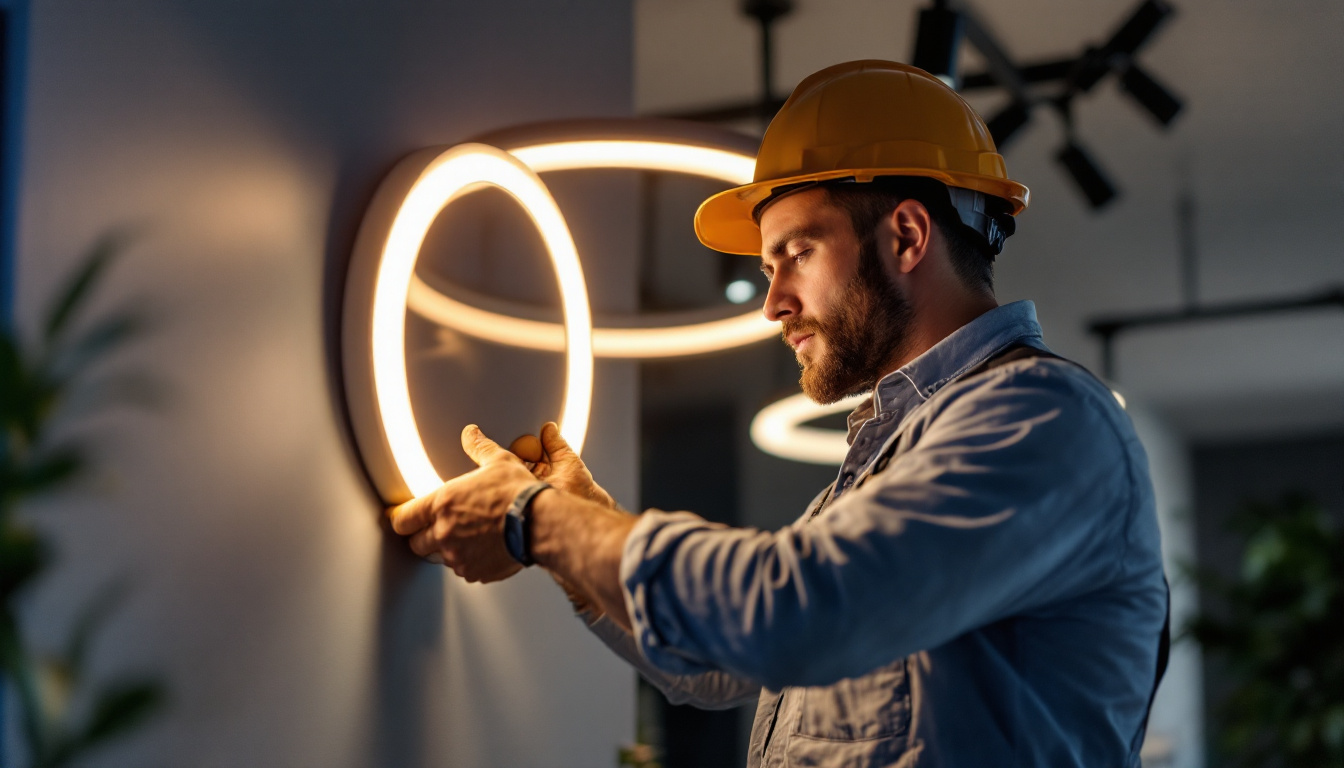
In the world of lighting, the specifications of light bulbs play a crucial role in ensuring optimal performance and safety. Among these specifications, the 120V 60Hz light bulb stands out as a standard that lighting contractors frequently encounter. Understanding the significance of this specification is essential for contractors who aim to deliver quality installations and meet client expectations.
Voltage and frequency are fundamental concepts in electrical systems, and they are particularly relevant when discussing light bulbs. The designation of 120V 60Hz refers to the voltage and frequency of the electrical supply in North America, which is crucial for compatibility with various lighting fixtures.
The 120V specification indicates the voltage level at which the light bulb operates. This is significant for several reasons. First, most residential and commercial lighting systems in North America are designed to work with 120V, making it the standard for a wide range of applications. Using bulbs that match this voltage ensures that they function correctly without the risk of damage or failure.
Moreover, when lighting contractors select bulbs, they must consider the compatibility with existing electrical systems. Installing a bulb with a different voltage can lead to inefficiencies, increased energy consumption, or even electrical hazards. Thus, understanding the 120V requirement is vital for ensuring safety and performance in lighting installations. Additionally, the design of electrical circuits is often tailored to handle specific voltage levels, which means that using bulbs with a different voltage could not only affect the bulb’s operation but also strain the circuit, potentially leading to costly repairs or replacements.
Frequency, measured in hertz (Hz), refers to the number of cycles per second of the electrical current. In the case of 120V 60Hz light bulbs, the 60Hz frequency is standard in North America. This frequency affects how the light bulb operates, particularly in terms of flicker and overall performance.
Lighting contractors must be aware that using bulbs designed for different frequencies can result in undesirable effects, such as flickering or reduced lifespan. For example, bulbs designed for 50Hz systems may not perform optimally in a 60Hz environment, leading to customer dissatisfaction. Understanding the implications of frequency helps contractors provide reliable and consistent lighting solutions. Furthermore, the interaction between frequency and the type of light bulb—whether incandescent, fluorescent, or LED—can also influence energy efficiency and the quality of light produced. For instance, LED bulbs are often designed to operate efficiently at specific frequencies, and using them in a mismatched frequency environment can lead to subpar performance, including color temperature shifts and diminished brightness.
There are various types of light bulbs available that operate at 120V 60Hz, each with its unique characteristics and applications. Familiarity with these types is essential for lighting contractors to make informed decisions based on the specific needs of their clients.
Incandescent bulbs have been a staple in residential lighting for decades. They are known for their warm light and excellent color rendering capabilities. Operating at 120V 60Hz, these bulbs are compatible with standard fixtures and dimmers, making them a popular choice for contractors.
However, incandescent bulbs are less energy-efficient compared to newer technologies. Their relatively short lifespan and high energy consumption are significant factors that contractors must consider when recommending lighting solutions to clients. Despite this, they remain a viable option for specific applications where warmth and ambiance are prioritized. For instance, they are often favored in living rooms and dining areas where a cozy atmosphere is desired, enhancing the overall aesthetic of the space.
CFLs are a more energy-efficient alternative to incandescent bulbs, providing significant energy savings while still operating at 120V 60Hz. These bulbs use a fraction of the energy to produce the same amount of light, making them an attractive option for environmentally conscious clients.
Lighting contractors should note that CFLs have a longer warm-up time compared to incandescent bulbs, which may affect client satisfaction in certain settings. Additionally, they contain small amounts of mercury, necessitating proper disposal methods. Understanding these nuances allows contractors to provide comprehensive guidance to clients regarding the benefits and limitations of CFLs. Moreover, CFLs are available in various shapes and sizes, which can be beneficial for specific fixtures and applications, such as recessed lighting or outdoor floodlights, where energy efficiency is crucial.
LED bulbs have rapidly gained popularity due to their exceptional energy efficiency and long lifespan. Operating at 120V 60Hz, they are compatible with most fixtures and can be used in various applications, from residential to commercial lighting.
One of the key advantages of LED technology is its versatility. LED bulbs come in a variety of shapes, sizes, and color temperatures, allowing contractors to tailor lighting solutions to meet specific client preferences. Furthermore, their low heat output reduces the risk of overheating and fire hazards, making them a safer choice for many environments. The ability to dim LED lights also adds to their appeal, enabling users to create the perfect ambiance for any occasion. Additionally, advancements in LED technology have led to the development of smart bulbs, which can be controlled remotely via smartphones or voice-activated systems, providing an added layer of convenience and energy management for clients looking to modernize their spaces.
Using 120V 60Hz light bulbs offers several advantages that lighting contractors should consider when making recommendations to clients. These benefits extend beyond compatibility, influencing energy efficiency, performance, and overall satisfaction.
Energy efficiency is one of the most significant benefits of using 120V 60Hz light bulbs, particularly when opting for CFL or LED options. These bulbs consume less energy than traditional incandescent bulbs, leading to lower electricity bills for clients.
Contractors who emphasize energy-efficient lighting solutions can help clients reduce their carbon footprint while also enjoying long-term cost savings. This aspect is particularly appealing to environmentally conscious consumers and businesses looking to adopt sustainable practices.
Another advantage of 120V 60Hz light bulbs, especially LEDs and CFLs, is their extended lifespan. While incandescent bulbs typically last around 1,000 hours, LED bulbs can last up to 25,000 hours or more. This longevity means less frequent replacements, resulting in lower maintenance costs for clients.
For lighting contractors, recommending long-lasting bulbs can enhance client satisfaction and build trust. Clients appreciate solutions that require less frequent attention, allowing them to focus on other aspects of their homes or businesses.
The versatility of 120V 60Hz light bulbs is another significant benefit. These bulbs can be used in various fixtures, including recessed lighting, chandeliers, and outdoor lighting. This compatibility allows contractors to offer a wide range of lighting solutions tailored to different client needs.
Furthermore, the availability of dimmable options adds an extra layer of customization. Many clients appreciate the ability to adjust lighting levels to create the desired ambiance in their spaces. Understanding the versatility of 120V 60Hz bulbs enables contractors to provide more comprehensive lighting solutions that meet diverse client preferences.
When working with 120V 60Hz light bulbs, lighting contractors must be mindful of several installation considerations to ensure safety and optimal performance. These factors can significantly impact the success of a lighting project.
Before installing any light bulb, contractors should assess the existing wiring and electrical compatibility of the fixtures. Ensuring that the electrical system can handle the load of the bulbs is essential for preventing issues such as flickering or overheating.
Contractors should also verify that the fixtures are rated for the specific type of bulb being installed. For instance, using an LED bulb in a fixture designed for incandescent bulbs may lead to compatibility issues. Conducting a thorough assessment of the electrical system helps mitigate potential risks and ensures a smooth installation process.
The choice of fixtures is another critical consideration for lighting contractors. Selecting fixtures that complement the type of bulb being used can enhance both aesthetics and performance. For example, some fixtures are designed to optimize the light output of LED bulbs, ensuring that clients receive the full benefits of energy efficiency and longevity.
Contractors should also consider the intended use of the space when selecting fixtures. Different environments may require specific types of lighting, such as task lighting for workspaces or ambient lighting for living areas. Understanding the client’s needs and preferences is essential for making informed fixture selections.
Compliance with local electrical codes and regulations is paramount for lighting contractors. These codes often dictate specific requirements for wiring, fixture installation, and bulb specifications. Failing to adhere to these regulations can result in safety hazards and legal repercussions.
Contractors should stay informed about local codes and ensure that all installations meet the necessary standards. This diligence not only protects clients but also enhances the contractor’s reputation as a knowledgeable and responsible professional in the field.
The 120V 60Hz light bulb is a fundamental component of modern lighting systems, and understanding its significance is crucial for lighting contractors. From ensuring compatibility with existing electrical systems to providing energy-efficient and versatile solutions, the knowledge of this specification empowers contractors to deliver exceptional service to their clients.
By recognizing the various types of 120V 60Hz light bulbs and their respective benefits, contractors can make informed recommendations that align with client needs. Furthermore, being mindful of installation considerations and compliance with local regulations enhances the overall quality of lighting projects.
In a rapidly evolving industry, staying informed about lighting technologies and specifications is essential for contractors seeking to remain competitive. Embracing the importance of 120V 60Hz light bulbs will undoubtedly lead to improved client satisfaction and successful lighting installations.
Ready to enhance your lighting projects with the best 120V 60Hz light bulbs on the market? Look no further than LumenWholesale, where we provide contractors with the highest quality, spec-grade lighting products at unbeatable wholesale prices. Say goodbye to local distributor markups and hello to our extensive selection that meets the highest industry standards. With LumenWholesale, you’ll enjoy the convenience of bulk buying with free shipping, ensuring you get premium lighting at the best value — without hidden fees or compromises. Elevate your lighting installations today by visiting Wholesale Lighting at the Best Value and discover the perfect blend of quality, affordability, and convenience.

Discover how football lights are revolutionizing safety in lighting installations.

Discover how canopy lights are revolutionizing the lighting industry for contractors.

Discover how the choice between 5000K and 6000K lighting is revolutionizing the work of contractors.

Discover the secrets to mastering LED circle lights with expert tips tailored for lighting contractors.